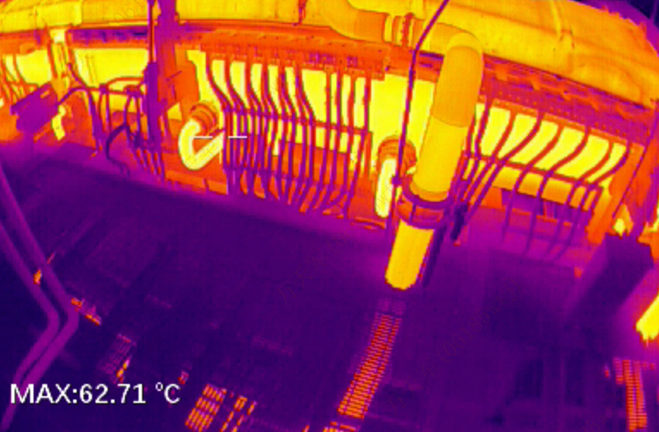Accurate body temperature measurement is crucial for epidemic prevention and daily health monitoring. Fever screening requires high precision, typically within ±0.5°C, which presents a significant challenge to temperature measurement devices. In contrast, traditional industrial temperature measurement devices have looser precision requirements, usually within ±2°C or ±2% of the measured temperature (whichever is greater), which clearly fails to meet the stringent standards for body temperature measurement. Thermography technology does not require direct contact with the person being measured, greatly enhancing the convenience and safety of temperature measurement. Additionally, its high-efficiency screening capability allows for rapid temperature detection of large crowds in densely populated areas, buying valuable time for epidemic prevention.
Innovative Integration of Thermography Technology and Temperature Reference Sources
To overcome this technical obstacle, many thermography manufacturers have introduced innovative solutions that combine thermography technology with temperature reference sources to achieve higher precision in temperature measurement. One effective method involves setting the blackbody temperature to a fixed value close to the human surface temperature (e.g., 36.0°C) and placing it within the field of view of the thermal imager. By simultaneously capturing the infrared radiation signals of both the human target and the blackbody reference source, the thermal imager can use the infrared radiation data from the blackbody as a reference to calculate the precise temperature of the target. This approach not only improves the accuracy of temperature measurement but also enhances the stability and reliability of the measurement device.
Key Factors Affecting the Accuracy of Human Thermography Temperature Measurement
In body temperature measurement, besides the performance of the measurement device, several key factors can affect measurement accuracy. These factors include:
Minimum Resolvable Temperature Difference (MRTD): MRTD is an important indicator of a thermal imaging system's ability to resolve small temperature differences. In human temperature measurement, a lower MRTD means the system can more accurately identify slight temperature variations on the body's surface, thus improving measurement precision.
Relative Irradiance of the Lens: The relative irradiance of the lens affects the thermal imaging system’s ability to collect the target's radiation energy. Lenses with higher relative irradiance can more effectively capture the infrared energy emitted by the body, reducing energy loss and thus improving measurement accuracy.
Measurement Distance and Angle: Measurement distance and angle are critical factors affecting measurement accuracy. As the distance increases and the angle changes, the amount of infrared radiation received by the thermal imager will vary, leading to measurement deviations. Therefore, in practical applications, it is necessary to adjust the measurement distance and angle according to specific conditions to obtain more accurate results.
Guide IR236: A Solution Designed for Body Temperature Measurement
The Guide sensmart IR236 IR Fever Warning System, a thermography temperature measurement device specifically designed for body temperature measurement, takes these influencing factors into account and incorporates multiple innovative technologies to enhance measurement accuracy. The device features a high-precision infrared non-cooled VOx detector, a blackbody reference source, and advanced AI deep learning algorithms, enabling rapid and accurate temperature measurement even in complex environments. Additionally, its multi-target tracking, customizable alert zones, and high-temperature shielding settings provide strong support for public health measures. Its vertical design facilitates easy deployment, while standard PC interfaces and powerful analysis software offer a convenient operating experience and rich data analysis capabilities.
In summary, the precision and efficiency of human temperature measurement solutions are crucial for effective epidemic prevention and daily health monitoring. By adopting advanced thermography technology and scientific measurement methods, we can better safeguard public health and safety.













.svg)



_fuben.jpg)

